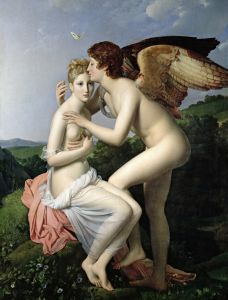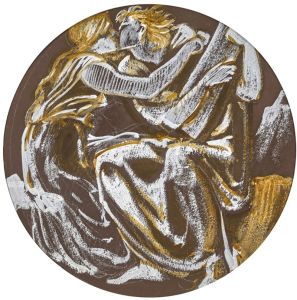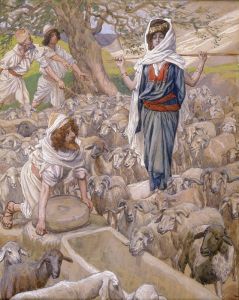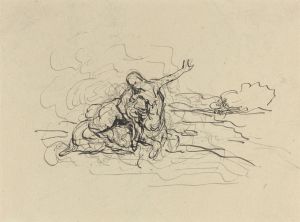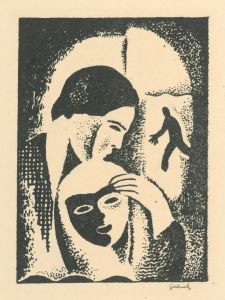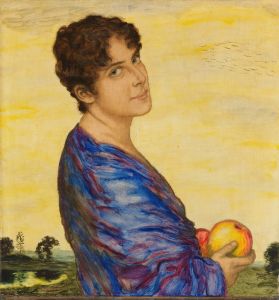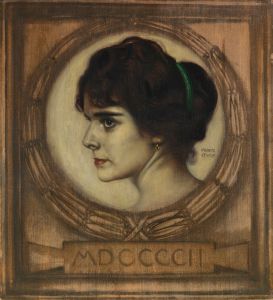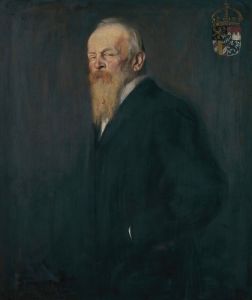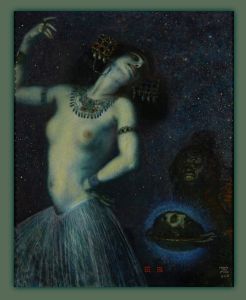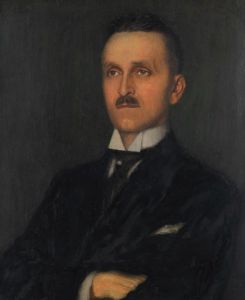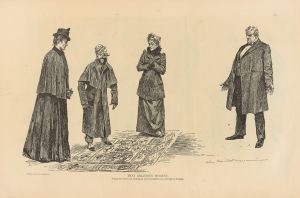
Erote riding a dolphin
A hand-painted replica of Franz von Stuck’s masterpiece Erote riding a dolphin, meticulously crafted by professional artists to capture the true essence of the original. Each piece is created with museum-quality canvas and rare mineral pigments, carefully painted by experienced artists with delicate brushstrokes and rich, layered colors to perfectly recreate the texture of the original artwork. Unlike machine-printed reproductions, this hand-painted version brings the painting to life, infused with the artist’s emotions and skill in every stroke. Whether for personal collection or home decoration, it instantly elevates the artistic atmosphere of any space.
"Erote riding a dolphin" is a painting by the German artist Franz von Stuck, a prominent figure in the Symbolist movement. Stuck, born in 1863 in Bavaria, was known for his mythological and allegorical subjects, often infused with a sense of mysticism and eroticism. His work is characterized by a distinctive style that combines elements of Art Nouveau and Symbolism, with a focus on dramatic compositions and a rich, often dark palette.
The painting "Erote riding a dolphin" depicts an Erote, a figure from Greek mythology, which is often associated with love and desire. Erotes are typically portrayed as winged gods, similar to the Roman Cupid, and are companions of Aphrodite, the goddess of love. In this artwork, the Erote is shown riding a dolphin, a creature that holds significant symbolism in ancient mythology. Dolphins were considered sacred to both Aphrodite and Apollo and were often seen as symbols of guidance, protection, and good fortune.
Franz von Stuck's choice of subject matter reflects his interest in classical mythology and its themes of passion and beauty. The depiction of the Erote on a dolphin can be interpreted as a representation of the harmonious relationship between love and nature, a common motif in Symbolist art. The painting likely explores the interplay between human emotions and the natural world, a theme that resonates throughout Stuck's body of work.
Stuck's technique in "Erote riding a dolphin" showcases his skillful use of color and form. He often employed a limited color palette, emphasizing contrasts between light and shadow to create a sense of depth and drama. His figures are typically rendered with a high degree of detail, capturing the sensuality and dynamism of the mythological subjects. The composition of the painting is carefully balanced, with the Erote and dolphin positioned in a way that draws the viewer's eye across the canvas, creating a sense of movement and fluidity.
Franz von Stuck was a key figure in the Munich Secession, an art movement that sought to break away from traditional academic art and embrace more modern, avant-garde approaches. His work, including "Erote riding a dolphin," played a significant role in shaping the direction of early 20th-century art in Germany. Stuck's influence extended beyond painting; he was also an accomplished sculptor, architect, and designer, contributing to the development of a holistic approach to art that integrated multiple disciplines.
Today, Franz von Stuck's paintings are celebrated for their innovative use of mythological themes and their contribution to the Symbolist movement. "Erote riding a dolphin" exemplifies his ability to blend classical subjects with modern artistic techniques, creating works that are both timeless and evocative. Stuck's legacy continues to be appreciated by art historians and enthusiasts, and his works are held in various collections and museums, reflecting his enduring impact on the art world.





